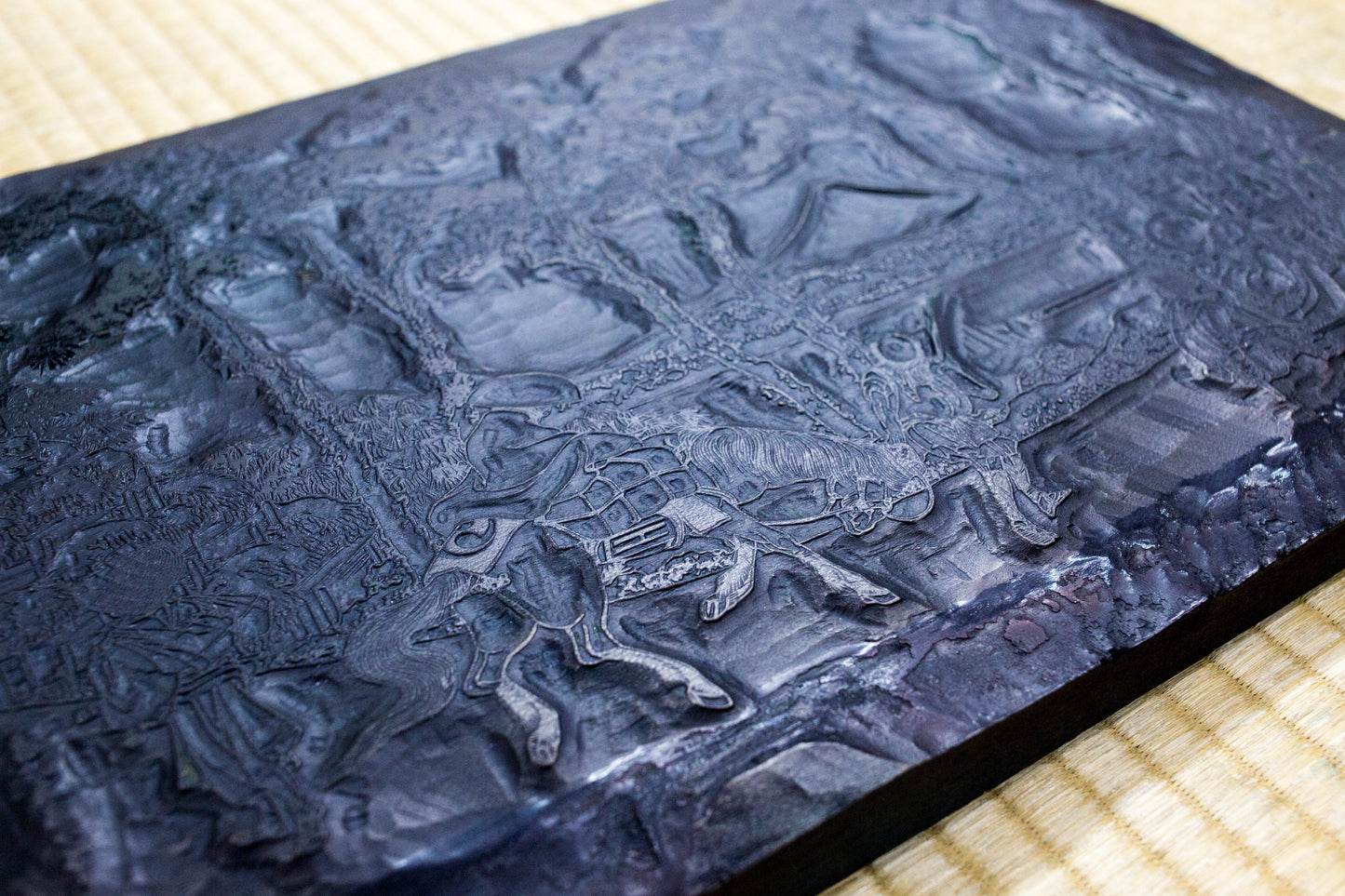Six Famous Beautiful Japanese Poet: Okita of Naniwa-ya
Six Famous Beautiful Japanese Poet: Okita of Naniwa-ya
Couldn't load pickup availability
You could read “Naniwaya okita” from the pictographs that represent five Japanese sounds in the left right corner: two bunches of green (na), arrow (ya), offing (oki),
ricefield (ta). Okita was a poster girl of a tea stall in Asakusa. From slightly lowered her face, a beauty comes out with her silence and a hand holding a teaspoon makes us feel humble. Okita was famous for beauty: people came to take a look at her and made a crowd. The tea stall master splashed water to get rid of them; however, some of them climbed up on the edge of the rainwater in roadside. She was so beautiful and attractive. Edo townsmen were longing for her.
Utamaro Kitagawa(1753-1806)

1753 (Horeki 3) – 1806 (Bunka 3)
After Utamaro came under the tutelage of Sekien Toriyama, a painter of the Kano School, Juzaburo Tsutaya found him. Utamaro started drawing color woodblock prints and illustration books under his patronage. Around 1791, Utamaro adopted the style of okubi-e (portraits showing only the head or head and upper torso) to his drawings of beautiful women, and used popular teahouse women as his models. For these, he was recognized as the leading beauty painter of ukiyo-e. His beauty portraits influenced the era; people who saw Utamaro’s portraits came to the women’s house to catch a glimpse of them. Later, under the Kansei Reform, a series of conservative governmental measures limited many expressions. However, Utamaro did not give up, and played an active role in the golden age of ukiyo-e. In 1804, Utamaro was accused of violation of the law for drawing Hideyoshi Toyotomi, whom it was forbidden to portray. Utamaro died two years after this incident.
Utamaro Masterpieces
Utamaro Kitagawa(1753-1806)
These are the Utamaro Masterpieces, including the Six Famous Beauties. Utamaro left a variety of works; however, people mostly recognize his title as a painter of women, especially beautiful women. Despite the number of oppressions and limitations he faced, he challenged these circumstances and kept drawing pictures as he believed. He faced women straight-on and depicted their real lives, bodies and souls. He undertook keen observations. Two thirds of his works were depicted women in the Yoshiwara district and courtesans. However, he also developed other themes, such as the affection of mother and child in old towns, and well-known teahouse girls. These thirty masterpieces stand as the culmination of Utamaro’s ukiyo-e illustrations of beautiful women.
Share



















